Humanin 10mg
Humanin 10mg
Humanin, a mitochondrial-derived peptide, offers neuroprotection against Alzheimer’s-related apoptosis, anti-apoptotic effects, metabolic regulation by improving insulin sensitivity, cardioprotection by reducing oxidative stress, and anti-inflammatory properties, making it a promising therapeutic candidate for various diseases. (PMID: 38132360, 37106758, 27434747, 21098860)
Humanin Research Topic:
-
Neuroprotection:
Humanin protects neurons from apoptosis induced by amyloid-beta and other toxic agents related to Alzheimer’s disease, demonstrating potential in treating neurodegenerative diseases. It also shows synergistic effects with insulin-like growth factor-binding protein 3 (IGFBP3) to protect neurons from apoptosis. (PMID: 38132360)
-
Anti-apoptotic Effects:
Humanin inhibits cell death by blocking various apoptotic pathways, thereby supporting cell survival in conditions of stress and damage. This includes protection against apoptosis in glial cells and other cell types under oxidative stress and other harmful conditions. (PMID: 37106758)
-
Metabolic Regulation:
It improves insulin sensitivity and has protective effects in metabolic conditions, such as diabetes. This includes enhancing glucose metabolism and reducing insulin resistance, contributing to overall metabolic health. (PMID: 37106758)
-
Cardioprotection:
Humanin has been shown to reduce damage to the heart by minimizing oxidative stress and preserving mitochondrial function, which can protect against cardiovascular diseases. (PMID: 27434747)
-
Anti-inflammatory Properties:
It has anti-inflammatory effects, which help in reducing chronic inflammation, thereby mitigating associated risks in various inflammatory diseases. (PMID: 21098860)
Structure
Source: Pubchem
Sequence: Met-Ala-Pro-Arg-Gly-Phe-Ser-CysLeu-Leu-Leu-Leu-Thr-Ser-Glu-I le-Asp-Leu-Pro-Val-Lys-Arg-ArgAla Molecular Formula: C119H204N34O32S2
Molecular Weight: 2687.3 g/mol
PubChem SID: 16131438
CAS Number: 330936-69-1
Synonyms: formyl humanin, HNGF6A protein
Humanin Research
What Is a Micro-peptide?
Unlike standard peptides and proteins, which are produced through post-translational modification of larger peptides, micro-peptides are produced by short, open reading frames (sORFs) and do not undergo modification once they are produced. Ranging in size from 100-150 amino acids in length, sORFs were originally overlooked by researchers convinced that all peptides were produced by the same process of DNA to RNA to protein to modified protein. No one considered that the last step, modification, could be disregarded entirely.
In humans, a number of sORFs have been identified. Their functions range from enhancing mRNA processing to helping to repair DNA damage and interacting with other proteins to create complex macro-proteins. Humanin, one of the smallest micro-peptides known to date, is just 24 amino acids in length. It interacts with the Bcl2-associated X protein (Bax) to regulate apoptosis, blocking the function of Bax when necessary to preserve cells that would otherwise be destroyed.
Neuroprotection
Research in rats indicates that humanin protects not just against apoptosis, but against programmed cell death in specific situations. In particular, the microÂ-peptide has been shown to protect neurons in the setting of Alzheimer’s disease, preventing the cell death that is induced by beta-amyloid plaque build-up [3]. Research shows that the peptide protects against excitotoxic neuron death in experiments using NMDA pulses [1].
Similar results to the above experiments were obtained when investigating neuron death occurring secondary to prion disease [4]. There is hope that this function of Humanin can be exploited to slow or even halt neurodegenerative diseases like Alzheimer’s disease and other forms of dementia. Though it does not strike at the heart of the conditions (e.g. the formation of amyloid plaques in Alzheimer’s disease) Humanin could be critical in tipping the delicate physiologic balance that plays out in these conditions, favoring the suspension of apoptosis [5].
Humanin appears to protect neurons through two different mechanisms, both of which have the ultimate function of preventing mitochondria from activating the apoptosis pathway. Under normal circumstances, the Bcl-2 family of proteins signals the release of proteins from the mitochondrial membrane, which in turn activate caspases that coordinate the orderly destruction and recycling of a cell [6]. This process is useful in many settings, such as during viral invasion, when the destruction of a handful of cells can prevent widespread tissue damage. Unfortunately, the process may become dysregulated in certain disease conditions with the result being unrestrained, widespread cell death. Humanin binds to Bcl-2 stimulating proteins Bid and tBid and blocks their function, thereby shutting down the apoptosis pathway at its origin [7].
Cutting-edge research out of Argentina has found that Humanin is released by astrocytes to protect synapses in hippocampal neurons [8]. As with many natural regulatory processes, there is some thought that Humanin function may decline with age, thereby allowing for age-related memory loss and the increased prevalence of neurodegenerative disease. Some researchers speculate that there may be a role for Humanin supplementation in older adults and a means of offsetting normal age-related declines in the production of this critical micro-peptide.
Humanin Interfaces with IGF-1
Recent research from the University of Southern California has revealed that Humanin interacts with insulin-like growth factor 1 (IGF-1 ). The two peptides interact with one another, with Humanin decreasing circulating levels of IGF-1 and IGF-1 influencing levels of Humanin. Though the mechanism of this interaction has yet to be fully elucidated, scientists find the evidence compelling that Humanin is a new and potentially important player in IGF-1 signaling. The peptides have synergistic effects in several ways and work together to inhibit apoptosis, boost insulin sensitivity, reduce inflammation, and protect against certain forms of heart disease. In other cases, the peptides play antagonist roles. More research is needed to elucidate the exact ways in which IGF-1 and Humanin influence one another, but what they do is a fact [9].
Heart Disease
Research out of the Mayo Clinic, America’s premiere healthcare institution, reveals that Humanin is expressed in the walls of human vasculature and helps to protect blood vessels from the effects of oxidized LDL (bad) cholesterol. In particular, Humanin interferes with the production of reactive oxygen species (free radicals) in response to LDL oxidation. In so doing, it reduces reactive oxygen species in the vasculature by 50% and reduces apoptosis by 50% as well [10].
It has already been established that Humanin levels decline with age, but new research suggests that the micro-peptide may also be affected by certain disease states. Researchers in cardiology have long sought to find blood markers that can be used to quantify how effectively mitochondria are functioning in the setting of cardiovascular disease. This is a critical measure of health in patients with heart disease because it gives a good estimate of how ischemic the tissue is and how advanced the disease is and may be useful in deciding when intervention is necessary. Research out of Russia shows that Humanin levels may be a good marker in this setting as the decline is in proportion to the severity of cardiovascular disease [11]. In this case, Humanin may serve as both a diagnostic marker and as a potential treatment for the same condition as supplementation with Humanin is likely to protect the already stressed mitochondria.
Humanin Research and Retinal Disease
The retinal pigment epithelium (RPE) is a layer of the retina that overlies and nourishes the cells responsible for vision. It plays roles in absorbing and scattering light, filtering the blood components that reach the inner retina, and establishing the immune privileged nature of the inner eye among other things. Damage to the RPE is seen in age-related macular degeneration as well as diabetic retinopathy and a handful of other common, serious diseases of the eye. Research now indicates that Humanin is an important component in the RPE and that it decreases oxidative stress in this tissue. Supplementation with Humanin, in cell culture, improves RPE function and increases the tissue’s resistance to apoptosis [12]. There is hope that this may help scientists establish more effective treatment and preventative strategies for retinal diseases like macular degeneration.
Bone Health
Bone loss is a serious condition that affects many people, particularly women, as they age. It is also a consequence of several disease states and is even caused by certain medical interventions. In the latter category, glucocorticoids used to treat severe inflammation (e.g. autoimmune inflammation) are the most notorious players and are known to cause extreme bone loss when used in high doses or for prolonged periods. Researchers in Sweden and Korea have discovered that Humanin may be beneficial to bones in two different ways. First, the micro-peptide has been found to prevent the death of chondrocytes (the cells that produce the collagen matrix on which bone is built) without interfering with the anti-inflammatory effects of glucocorticoids like dexamethasone [13]. This effect helps to boost rates of bone and cartilage growth, offsetting some of the accelerated bone loss caused by glucocorticoids. At the same time that Humanin promotes chondrocyte development, it appears to reduce osteoclast formation. Osteoclasts are the cells responsible for bone breakdown and remodeling. While useful and important in normal physiologic function, over-activation of these cells in pathologic states leads to severe bone loss. By preventing osteoclast formation, Humanin helps to reduce excessive bone remodeling and loss [14].
Humanin exhibits minimal side effects and low oral and excellent subcutaneous bioavailability in mice. Per kilogram dosage in mice does not scale to humans. Humanin for sale at Life Link Research is limited to educational and scientific research only, not for human consumption. Only buy Humanin if you are a licensed researcher.
Article Author
The above literature was researched, edited, and organized by Dr. Logan, M.D. Dr. Logan holds a doctorate from Case Western Reserve University School of Medicine and a B.S. in molecular biology.
Scientific Journal Author
Pinchas Cohen, MD, is the dean of the USC Leonard Davis School of Gerontology, executive director of the Ethel Percy Andrus Gerontology Center, and holder of the William and Sylvia Kugel Dean’s Chair in Gerontology. He is an expert in the study of mitochondrial peptides and their possible therapeutic benefits for diabetes, Alzheimer’s, and other diseases related to aging. Cohen’s current research focus is on the emerging science of mitochondria-derived peptides, which he discovered. These peptides include Humanin, a 24-amino acid peptide encoded from the mt-16S-rRNA. It is a novel, centrally-acting insulin sensitizer and metaboloprotective factor representing a new therapeutic and diagnostic target in diabetes and related diseases. Other mitochondrial peptides of interest include MOTS-c, a second peptide encoded from a small ORF in the 12S region of the mitochondrial chromosome that has potent anti-diabetes and anti-obesity effect and acts as an exercise-mimetic, and SHLP2, a peptide encoded from the light strand of the mt-16S-rRNA region whose levels correlate with prostate cancer.
Dr. Alfonso Eirin received his MD in 2004 from the University of the Republic in Montevideo Uruguay. Currently, he is working as a senior research fellow in the Division of Nephrology and Hypertension at Mayo Clinic, Rochester, MN. Dr. Eirin’s research is focused on understanding the pathogenesis of renal and cardiac injury due to atherosclerotic renovascular disease (ARVD) and the development of treatment strategies to improve blood pressure and renal outcomes after revascularization in these patients.
Dr. Pinchas Cohen and Dr. Alfonso Eirin are being referenced as leading scientists involved in the research and development of Humanin. In no way are these doctors/scientists endorsing or advocating the purchase, sale, or use of this product for any reason. There is no affiliation or relationship, implied or otherwise, between Life Link Research and these doctors. The purpose of citing the doctors is to acknowledge, recognize, and credit the exhaustive research and development efforts conducted by the scientists studying this peptide. Dr. Pinchas Cohen is listed in [9] and Dr. Alfonso Eirin is listed in [10] under the referenced citations.
Referenced Citations
- A. Caricasole, V. Bruno, I. Cappuccio, D. Melchiorri, A. Copani, and F. Nicoletti, “A novel rat gene encoding a Humanin-like peptide endowed with broad neuroprotective activity,” FASEB J. Off. Publ. Fed. Am. Soc. Exp. Biol., vol. 16, no. 10, pp. 1331-1333, Aug. 2002.
- PubChem, “Humanin.” [Online]. Available: https://pubchem.ncbi.nlm.nih.gov/compound/ 16131438. [Accessed: 11-Sep-2019].
- M. Matsuoka, “Humanin; a defender against Alzheimer’s disease?,” Recent Patents CNS Drug Discov., vol. 4, no. 1, pp. 37–42, Jan. 2009.
- I. Sponne, A. Fifre, V. Koziel, B. Kriem, T. Oster, and T. Pillot, “Humanin rescues cortical neurons from prion-peptide-induced apoptosis,” Mol. Cell. Neurosci., vol. 25, no. 1, pp. 95-102,Jan. 2004.
- A. R. White et al., “Sublethal concentrations of prion peptide PrP106-126 or the amyloid beta peptide of Alzheimer’s disease activates expression of proapoptotic markers in primary cortical neurons,” Neurobiol. Dis., vol. 8, no. 2, pp. 299-316, Apr. 2001.
- C. Wang and R. J. Youle, “The Role of Mitochondria in Apoptosis,” Annu. Rev. Genet., vol. 43, pp. 95–118, 2009.
- D. Zhai, F. Luciano, X. Zhu, B. Guo, A. C. Satterthwait, and J. C. Reed, “Humanin binds and nullifies Bid activity by blocking its activation of Bax and Bak,” J. Biol. Chem., vol. 280, no. 16, pp. 15815–15824, Apr. 2005.
- S. C. Zarate, M. E. Traetta, M. G. Codagnone, A. Seilicovich, and A. G. Reines, “Humanin, a Mitochondrial-Derived Peptide Released by Astrocytes, Prevents Synapse Loss in Hippocampal Neurons,” Front. Aging Neurosci., vol. 11, p. 123, 2019.
- J. Xiao, S.-J. Kim, P. Cohen, and K. Yen, “Humanin: Functional Interfaces with IGF-1,” Growth Horm. IGF Res. Off. J. Growth Horm. Res. Soc. Int. IGF Res. Soc., vol. 29, RR- 21- 27, 2016.
- A. R. Bachar et al., “Humanin is expressed in human vascular walls and has a cytoprotective effect against oxidized LDL-induced oxidative stress,” Cardiovasc. Res., vol. 88, no. 2,_RR- 360-366, Nov. 2010.
- A. A. Zhloba, T. F. Subbotina, N. S. Molchan, and Y. S. Polushin, “[The level of circulating humanin in patients with ischemic heart disease.],” Klin. Lab. Diagn., vol. 63, no. 8, pp. 466-470, 2018.
- Sreekumar, Parameswaran & Ishikawa, Keijiro & SRee, Chris & Mehta, Hemal & Wan, Junxiang & Yen, Kelvin & Kannan, Ram & Hinton, David. (2016). The Mitochondrial-Derived Peptide Humanin Protects RPE Cells From Oxidative Stress, Senescence, and Mitochondrial Dysfunction. Investigative Opthalmology. & Visual Science. 57. 1238. 10.1167/iovs.15-17053.
- B. Gelvin, F. Zaman, C. Aulin, and L. Savendahl, “Humanin prevents undesired apoptosis of chondrocytes without interfering with the anti-inflammatory effect of dexamethasone in collagen-induced arthritis,” Clin. Exp. Rheumatol., Jun. 2019.
- N. Kang, K. W. Kim, and D. M. Shin, “Humanin suppresses receptor activator of nuclear factor-KB ligand-induced osteoclast differentiation via AMP-activated protein kinase activation,” Korean J. Physiol. Pharmacol. Off. J. Korean Physiol. Soc. Korean Soc. Pharmacol., vol. 23, no. 5, pp. 411-417, Sep. 2019.
$148.00
Description
Humanin, a mitochondrial-derived peptide, offers neuroprotection against Alzheimer’s-related apoptosis, anti-apoptotic effects, metabolic regulation by improving insulin sensitivity, cardioprotection by reducing oxidative stress, and anti-inflammatory properties, making it a promising therapeutic candidate for various diseases. (PMID: 38132360, 37106758, 27434747, 21098860)
Humanin Research Topic:
-
Neuroprotection:
Humanin protects neurons from apoptosis induced by amyloid-beta and other toxic agents related to Alzheimer’s disease, demonstrating potential in treating neurodegenerative diseases. It also shows synergistic effects with insulin-like growth factor-binding protein 3 (IGFBP3) to protect neurons from apoptosis. (PMID: 38132360)
-
Anti-apoptotic Effects:
Humanin inhibits cell death by blocking various apoptotic pathways, thereby supporting cell survival in conditions of stress and damage. This includes protection against apoptosis in glial cells and other cell types under oxidative stress and other harmful conditions. (PMID: 37106758)
-
Metabolic Regulation:
It improves insulin sensitivity and has protective effects in metabolic conditions, such as diabetes. This includes enhancing glucose metabolism and reducing insulin resistance, contributing to overall metabolic health. (PMID: 37106758)
-
Cardioprotection:
Humanin has been shown to reduce damage to the heart by minimizing oxidative stress and preserving mitochondrial function, which can protect against cardiovascular diseases. (PMID: 27434747)
-
Anti-inflammatory Properties:
It has anti-inflammatory effects, which help in reducing chronic inflammation, thereby mitigating associated risks in various inflammatory diseases. (PMID: 21098860)
Structure
Source: Pubchem
Sequence: Met-Ala-Pro-Arg-Gly-Phe-Ser-CysLeu-Leu-Leu-Leu-Thr-Ser-Glu-I le-Asp-Leu-Pro-Val-Lys-Arg-ArgAla Molecular Formula: C119H204N34O32S2
Molecular Weight: 2687.3 g/mol
PubChem SID: 16131438
CAS Number: 330936-69-1
Synonyms: formyl humanin, HNGF6A protein
Humanin Research
What Is a Micro-peptide?
Unlike standard peptides and proteins, which are produced through post-translational modification of larger peptides, micro-peptides are produced by short, open reading frames (sORFs) and do not undergo modification once they are produced. Ranging in size from 100-150 amino acids in length, sORFs were originally overlooked by researchers convinced that all peptides were produced by the same process of DNA to RNA to protein to modified protein. No one considered that the last step, modification, could be disregarded entirely.
In humans, a number of sORFs have been identified. Their functions range from enhancing mRNA processing to helping to repair DNA damage and interacting with other proteins to create complex macro-proteins. Humanin, one of the smallest micro-peptides known to date, is just 24 amino acids in length. It interacts with the Bcl2-associated X protein (Bax) to regulate apoptosis, blocking the function of Bax when necessary to preserve cells that would otherwise be destroyed.
Neuroprotection
Research in rats indicates that humanin protects not just against apoptosis, but against programmed cell death in specific situations. In particular, the microÂ-peptide has been shown to protect neurons in the setting of Alzheimer’s disease, preventing the cell death that is induced by beta-amyloid plaque build-up [3]. Research shows that the peptide protects against excitotoxic neuron death in experiments using NMDA pulses [1].
Similar results to the above experiments were obtained when investigating neuron death occurring secondary to prion disease [4]. There is hope that this function of Humanin can be exploited to slow or even halt neurodegenerative diseases like Alzheimer’s disease and other forms of dementia. Though it does not strike at the heart of the conditions (e.g. the formation of amyloid plaques in Alzheimer’s disease) Humanin could be critical in tipping the delicate physiologic balance that plays out in these conditions, favoring the suspension of apoptosis [5].
Humanin appears to protect neurons through two different mechanisms, both of which have the ultimate function of preventing mitochondria from activating the apoptosis pathway. Under normal circumstances, the Bcl-2 family of proteins signals the release of proteins from the mitochondrial membrane, which in turn activate caspases that coordinate the orderly destruction and recycling of a cell [6]. This process is useful in many settings, such as during viral invasion, when the destruction of a handful of cells can prevent widespread tissue damage. Unfortunately, the process may become dysregulated in certain disease conditions with the result being unrestrained, widespread cell death. Humanin binds to Bcl-2 stimulating proteins Bid and tBid and blocks their function, thereby shutting down the apoptosis pathway at its origin [7].
Cutting-edge research out of Argentina has found that Humanin is released by astrocytes to protect synapses in hippocampal neurons [8]. As with many natural regulatory processes, there is some thought that Humanin function may decline with age, thereby allowing for age-related memory loss and the increased prevalence of neurodegenerative disease. Some researchers speculate that there may be a role for Humanin supplementation in older adults and a means of offsetting normal age-related declines in the production of this critical micro-peptide.
Humanin Interfaces with IGF-1
Recent research from the University of Southern California has revealed that Humanin interacts with insulin-like growth factor 1 (IGF-1 ). The two peptides interact with one another, with Humanin decreasing circulating levels of IGF-1 and IGF-1 influencing levels of Humanin. Though the mechanism of this interaction has yet to be fully elucidated, scientists find the evidence compelling that Humanin is a new and potentially important player in IGF-1 signaling. The peptides have synergistic effects in several ways and work together to inhibit apoptosis, boost insulin sensitivity, reduce inflammation, and protect against certain forms of heart disease. In other cases, the peptides play antagonist roles. More research is needed to elucidate the exact ways in which IGF-1 and Humanin influence one another, but what they do is a fact [9].
Heart Disease
Research out of the Mayo Clinic, America’s premiere healthcare institution, reveals that Humanin is expressed in the walls of human vasculature and helps to protect blood vessels from the effects of oxidized LDL (bad) cholesterol. In particular, Humanin interferes with the production of reactive oxygen species (free radicals) in response to LDL oxidation. In so doing, it reduces reactive oxygen species in the vasculature by 50% and reduces apoptosis by 50% as well [10].
It has already been established that Humanin levels decline with age, but new research suggests that the micro-peptide may also be affected by certain disease states. Researchers in cardiology have long sought to find blood markers that can be used to quantify how effectively mitochondria are functioning in the setting of cardiovascular disease. This is a critical measure of health in patients with heart disease because it gives a good estimate of how ischemic the tissue is and how advanced the disease is and may be useful in deciding when intervention is necessary. Research out of Russia shows that Humanin levels may be a good marker in this setting as the decline is in proportion to the severity of cardiovascular disease [11]. In this case, Humanin may serve as both a diagnostic marker and as a potential treatment for the same condition as supplementation with Humanin is likely to protect the already stressed mitochondria.
Humanin Research and Retinal Disease
The retinal pigment epithelium (RPE) is a layer of the retina that overlies and nourishes the cells responsible for vision. It plays roles in absorbing and scattering light, filtering the blood components that reach the inner retina, and establishing the immune privileged nature of the inner eye among other things. Damage to the RPE is seen in age-related macular degeneration as well as diabetic retinopathy and a handful of other common, serious diseases of the eye. Research now indicates that Humanin is an important component in the RPE and that it decreases oxidative stress in this tissue. Supplementation with Humanin, in cell culture, improves RPE function and increases the tissue’s resistance to apoptosis [12]. There is hope that this may help scientists establish more effective treatment and preventative strategies for retinal diseases like macular degeneration.
Bone Health
Bone loss is a serious condition that affects many people, particularly women, as they age. It is also a consequence of several disease states and is even caused by certain medical interventions. In the latter category, glucocorticoids used to treat severe inflammation (e.g. autoimmune inflammation) are the most notorious players and are known to cause extreme bone loss when used in high doses or for prolonged periods. Researchers in Sweden and Korea have discovered that Humanin may be beneficial to bones in two different ways. First, the micro-peptide has been found to prevent the death of chondrocytes (the cells that produce the collagen matrix on which bone is built) without interfering with the anti-inflammatory effects of glucocorticoids like dexamethasone [13]. This effect helps to boost rates of bone and cartilage growth, offsetting some of the accelerated bone loss caused by glucocorticoids. At the same time that Humanin promotes chondrocyte development, it appears to reduce osteoclast formation. Osteoclasts are the cells responsible for bone breakdown and remodeling. While useful and important in normal physiologic function, over-activation of these cells in pathologic states leads to severe bone loss. By preventing osteoclast formation, Humanin helps to reduce excessive bone remodeling and loss [14].
Humanin exhibits minimal side effects and low oral and excellent subcutaneous bioavailability in mice. Per kilogram dosage in mice does not scale to humans. Humanin for sale at Life Link Research is limited to educational and scientific research only, not for human consumption. Only buy Humanin if you are a licensed researcher.
Article Author
The above literature was researched, edited, and organized by Dr. Logan, M.D. Dr. Logan holds a doctorate from Case Western Reserve University School of Medicine and a B.S. in molecular biology.
Scientific Journal Author
Pinchas Cohen, MD, is the dean of the USC Leonard Davis School of Gerontology, executive director of the Ethel Percy Andrus Gerontology Center, and holder of the William and Sylvia Kugel Dean’s Chair in Gerontology. He is an expert in the study of mitochondrial peptides and their possible therapeutic benefits for diabetes, Alzheimer’s, and other diseases related to aging. Cohen’s current research focus is on the emerging science of mitochondria-derived peptides, which he discovered. These peptides include Humanin, a 24-amino acid peptide encoded from the mt-16S-rRNA. It is a novel, centrally-acting insulin sensitizer and metaboloprotective factor representing a new therapeutic and diagnostic target in diabetes and related diseases. Other mitochondrial peptides of interest include MOTS-c, a second peptide encoded from a small ORF in the 12S region of the mitochondrial chromosome that has potent anti-diabetes and anti-obesity effect and acts as an exercise-mimetic, and SHLP2, a peptide encoded from the light strand of the mt-16S-rRNA region whose levels correlate with prostate cancer.
Dr. Alfonso Eirin received his MD in 2004 from the University of the Republic in Montevideo Uruguay. Currently, he is working as a senior research fellow in the Division of Nephrology and Hypertension at Mayo Clinic, Rochester, MN. Dr. Eirin’s research is focused on understanding the pathogenesis of renal and cardiac injury due to atherosclerotic renovascular disease (ARVD) and the development of treatment strategies to improve blood pressure and renal outcomes after revascularization in these patients.
Dr. Pinchas Cohen and Dr. Alfonso Eirin are being referenced as leading scientists involved in the research and development of Humanin. In no way are these doctors/scientists endorsing or advocating the purchase, sale, or use of this product for any reason. There is no affiliation or relationship, implied or otherwise, between Life Link Research and these doctors. The purpose of citing the doctors is to acknowledge, recognize, and credit the exhaustive research and development efforts conducted by the scientists studying this peptide. Dr. Pinchas Cohen is listed in [9] and Dr. Alfonso Eirin is listed in [10] under the referenced citations.
Referenced Citations
- A. Caricasole, V. Bruno, I. Cappuccio, D. Melchiorri, A. Copani, and F. Nicoletti, “A novel rat gene encoding a Humanin-like peptide endowed with broad neuroprotective activity,” FASEB J. Off. Publ. Fed. Am. Soc. Exp. Biol., vol. 16, no. 10, pp. 1331-1333, Aug. 2002.
- PubChem, “Humanin.” [Online]. Available: https://pubchem.ncbi.nlm.nih.gov/compound/ 16131438. [Accessed: 11-Sep-2019].
- M. Matsuoka, “Humanin; a defender against Alzheimer’s disease?,” Recent Patents CNS Drug Discov., vol. 4, no. 1, pp. 37–42, Jan. 2009.
- I. Sponne, A. Fifre, V. Koziel, B. Kriem, T. Oster, and T. Pillot, “Humanin rescues cortical neurons from prion-peptide-induced apoptosis,” Mol. Cell. Neurosci., vol. 25, no. 1, pp. 95-102,Jan. 2004.
- A. R. White et al., “Sublethal concentrations of prion peptide PrP106-126 or the amyloid beta peptide of Alzheimer’s disease activates expression of proapoptotic markers in primary cortical neurons,” Neurobiol. Dis., vol. 8, no. 2, pp. 299-316, Apr. 2001.
- C. Wang and R. J. Youle, “The Role of Mitochondria in Apoptosis,” Annu. Rev. Genet., vol. 43, pp. 95–118, 2009.
- D. Zhai, F. Luciano, X. Zhu, B. Guo, A. C. Satterthwait, and J. C. Reed, “Humanin binds and nullifies Bid activity by blocking its activation of Bax and Bak,” J. Biol. Chem., vol. 280, no. 16, pp. 15815–15824, Apr. 2005.
- S. C. Zarate, M. E. Traetta, M. G. Codagnone, A. Seilicovich, and A. G. Reines, “Humanin, a Mitochondrial-Derived Peptide Released by Astrocytes, Prevents Synapse Loss in Hippocampal Neurons,” Front. Aging Neurosci., vol. 11, p. 123, 2019.
- J. Xiao, S.-J. Kim, P. Cohen, and K. Yen, “Humanin: Functional Interfaces with IGF-1,” Growth Horm. IGF Res. Off. J. Growth Horm. Res. Soc. Int. IGF Res. Soc., vol. 29, RR- 21- 27, 2016.
- A. R. Bachar et al., “Humanin is expressed in human vascular walls and has a cytoprotective effect against oxidized LDL-induced oxidative stress,” Cardiovasc. Res., vol. 88, no. 2,_RR- 360-366, Nov. 2010.
- A. A. Zhloba, T. F. Subbotina, N. S. Molchan, and Y. S. Polushin, “[The level of circulating humanin in patients with ischemic heart disease.],” Klin. Lab. Diagn., vol. 63, no. 8, pp. 466-470, 2018.
- Sreekumar, Parameswaran & Ishikawa, Keijiro & SRee, Chris & Mehta, Hemal & Wan, Junxiang & Yen, Kelvin & Kannan, Ram & Hinton, David. (2016). The Mitochondrial-Derived Peptide Humanin Protects RPE Cells From Oxidative Stress, Senescence, and Mitochondrial Dysfunction. Investigative Opthalmology. & Visual Science. 57. 1238. 10.1167/iovs.15-17053.
- B. Gelvin, F. Zaman, C. Aulin, and L. Savendahl, “Humanin prevents undesired apoptosis of chondrocytes without interfering with the anti-inflammatory effect of dexamethasone in collagen-induced arthritis,” Clin. Exp. Rheumatol., Jun. 2019.
- N. Kang, K. W. Kim, and D. M. Shin, “Humanin suppresses receptor activator of nuclear factor-KB ligand-induced osteoclast differentiation via AMP-activated protein kinase activation,” Korean J. Physiol. Pharmacol. Off. J. Korean Physiol. Soc. Korean Soc. Pharmacol., vol. 23, no. 5, pp. 411-417, Sep. 2019.




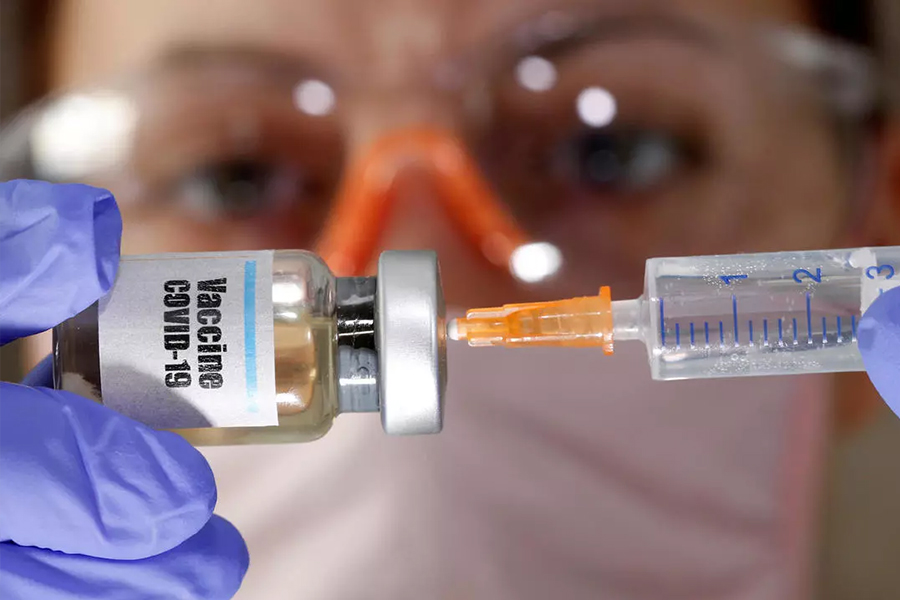

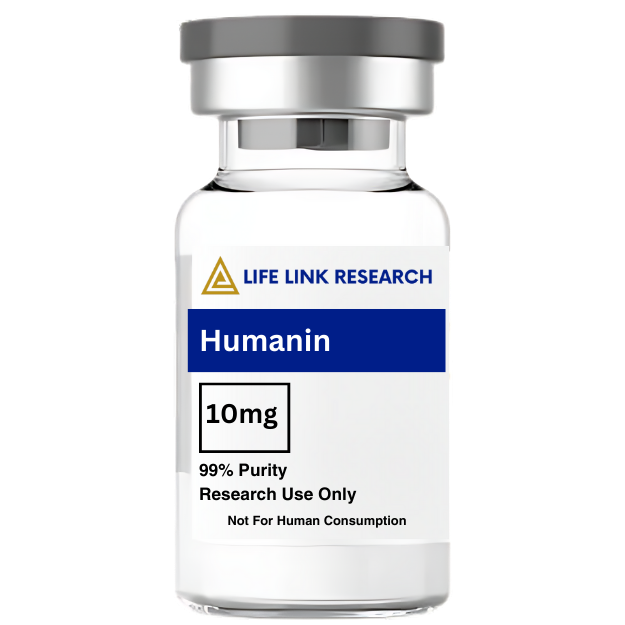

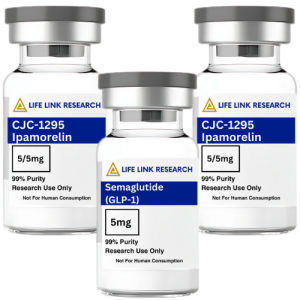
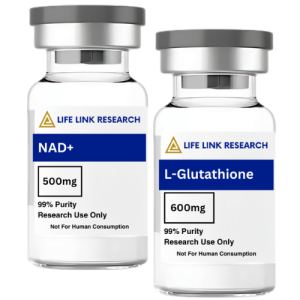
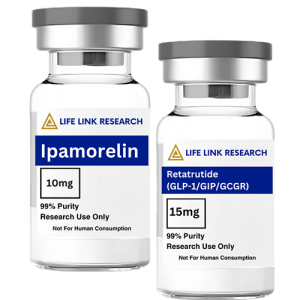
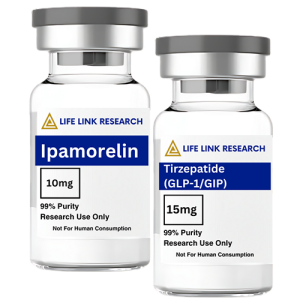
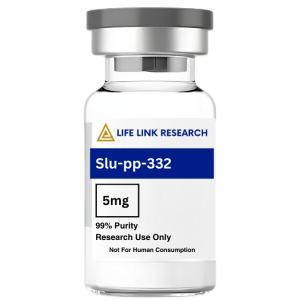
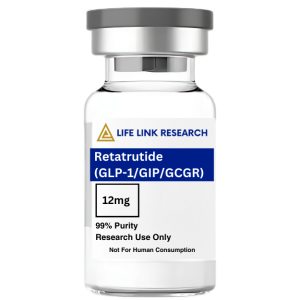


Reviews
There are no reviews yet.